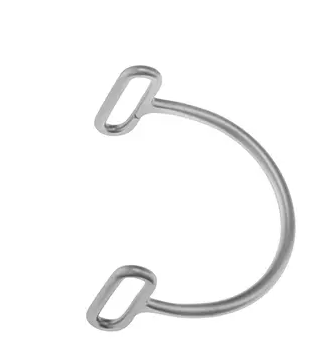Logan Bow Indication, Nursing Care, Feeding, Cheiloplasty
A cleft palate is a birth defect characterized by a split or aperture in the roof of the mouth. It develops when the palate's forming tissues don't fully fuse together during fetal development. This condition may make it difficult for a person to breathe, eat, or even speak normally.
Individuals who are born with a cleft palate may experience a variety of problems such as as trouble speaking, chewing and swallowing difficulties, ear infections, and even dental problems. Both the psychological and physical effects may be profound.
What is Logan Bow?
The Logan Bow is a specialized orthodontic appliance that was designed specifically for the management of the cleft palate. It is composed of a small, curved metal wire that is affixed to dental bands and positioned within the mouth.

The Logan Bow functions by gradually bringing the margins of the cleft palate closer together. This gradual movement aids in the closure of the gap in the roof of the mouth, promoting correct development and function.
Indications
Cleft Lip and Palate
Patients with cleft lip and palate abnormalities at birth are among the main candidates for the Logan Bow. The inability of a youngster to breathe, communicate, or feed itself can be greatly impacted by this congenital abnormality. By progressively realigning the palate and cleft lip, the Logan Bow enhances both appearance and functionality.
Orthodontic Corrections
In orthodontic treatments, Logan Bow is also used to address misalignment problems such as overbites, underbites, and crossbites. It helps achieve a balanced face profile and a healthy bite.
Nursing Care
With the Logan Bow, proper nursing care is mandatory for the patient. The nursing staff and other caregivers play a vital part in assuring the patient's well-being and comfort during therapy.
Pain Management
Usually, in the early days of Logan Bow, patients may feel some pain and discomfort. In order to relieve pain, nurses must use the proper pain management procedures, which may involve ice packs and medicines.
Oral Hygiene
In order to avoid infections and problems, maintaining proper dental hygiene is crucial. Nurses should keep an eye on compliance and instruct patients and their families on good oral hygiene practices.
Diet and Nutrition
Patients with Logan Bow might have to change what they eat because of the device. Working together with nutritionists, nursing staff can make sure that patients receive the right kind of nutrition through dietary modifications or nutritional supplements.
Feeding
Feeding Difficulties:
Individuals undergoing Logan Bow may find it difficult to feed themselves, particularly small children and newborns. Malnutrition problems and frustration may arise from the device's interference with nursing or bottle-feeding.
Effective Feeding Methods:
Lactation Consultation
Seeking advice from a lactation professional is essential for infants. If necessary, they can offer suggestions for substitute feeding strategies as well as advice on the best ways to breastfeed.
Bottle Adjustments
Feeding comfort can be increased for older infants and kids by altering the bottle or using nipples designed to fit the Logan Bow.
Logan Bow and cheiloplasty
An external device called a Logan Bow is used in the management of cleft lip patients in order to preserve postoperative apposition and prevent undue strain following cheiloplasty.
A Logan Bow may be used by the surgeon to support the surgical site and encourage appropriate healing during cheiloplasty. The Logan Bow is usually remained in place for about a week following the treatment. By maintaining the cleft lip in the ideal alignment, the device promotes appropriate tissue healing.
 Reviewed by Simon Albert
on
September 15, 2023
Rating:
Reviewed by Simon Albert
on
September 15, 2023
Rating:











